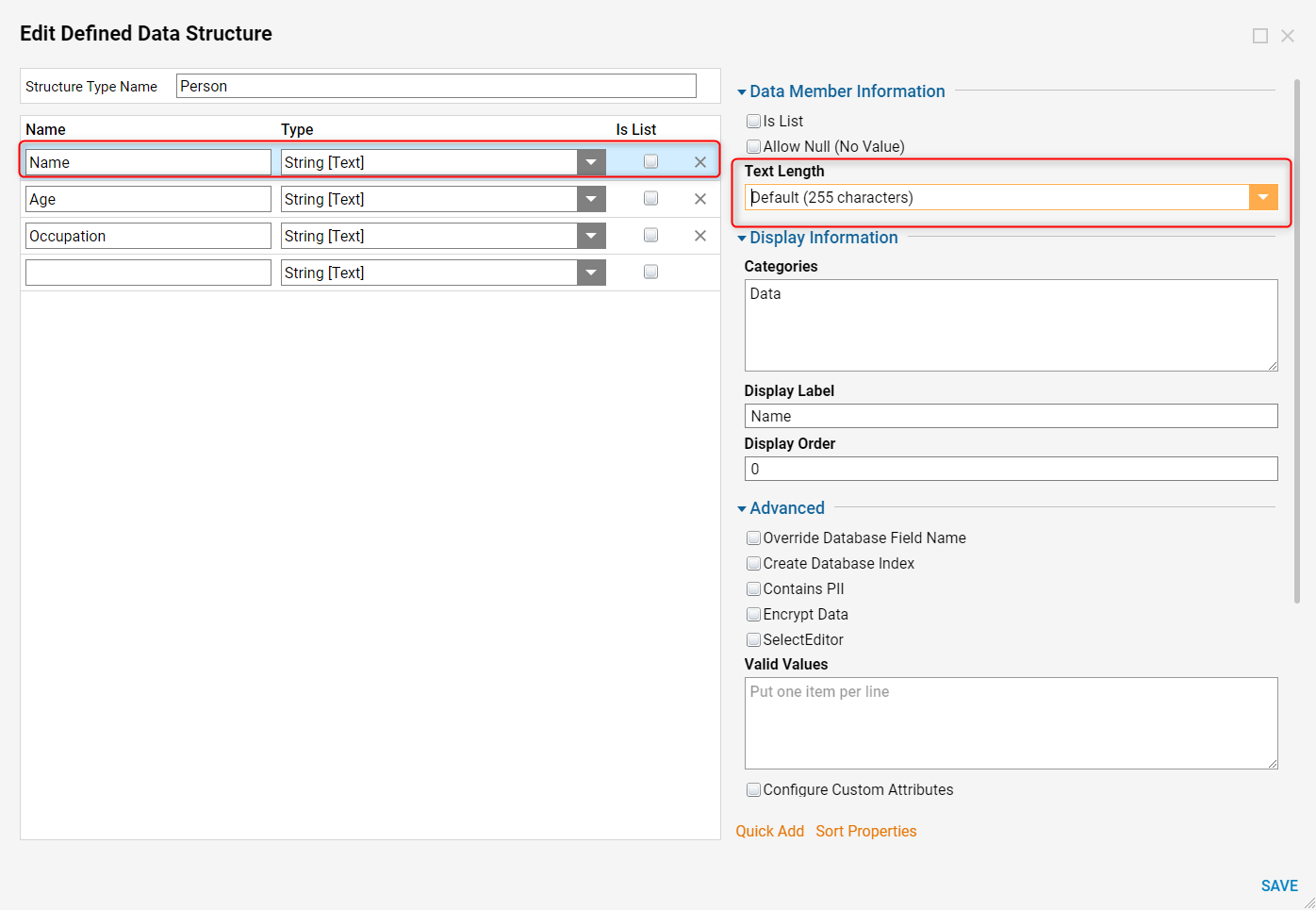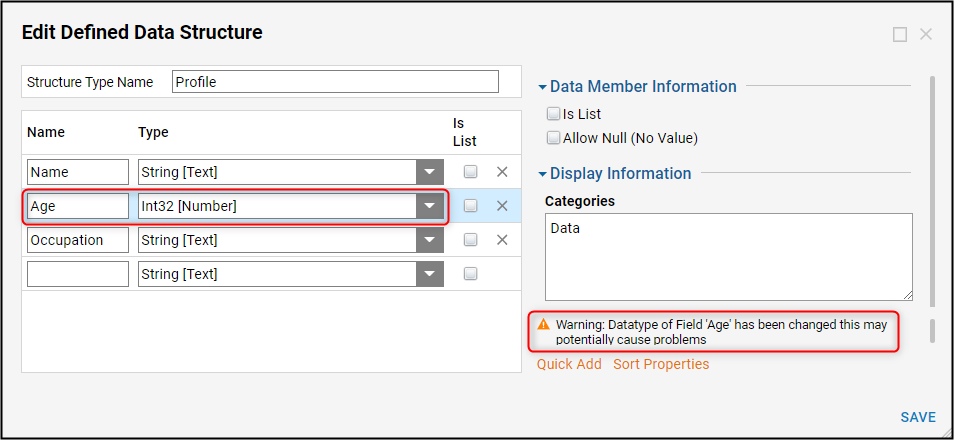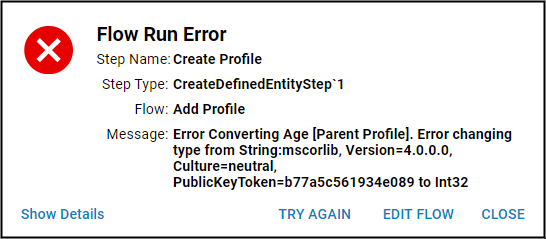A data structure represents real or abstract objects through data fields, which are basic units of information that are variables of the represented object.
For example, a person represented as a data structure has attributes such as hair color, shoe size, and date of birth. Each data structure has unique properties that make it well suited to give a certain view of the data.
Changes to Data Fields
When updating data fields for a data structure, certain changes can alter how values are stored within the database. Changes such as altering the type or name of a data field can potentially lead to issues.
For text stored in the database, the default limit is 255 characters; however, this can be modified through the Text Length setting when modifying the data structure.
Updating Field Name
When updating the name for a data field, a new column will be created for the associated database table.
If data currently exists for the table, the new column will be populated with null values for any existing rows. All new entries will populate the table, with values added to the new column.
Changing the Field Type
When changing the field type, a warning will be displayed informing users that updating the field may cause potential issues. and may not be possible for certain Data Structures.
For example, a string field is updated to use Int32. These changes will affect how the data is stored within the database.

In addition, Flows and other Designer Elements that had used the data field will need to be updated to reflect the changes. Otherwise, an error will be thrown.
If this occurs, a duplicate table will be created, with existing values for the updated field being populated with null values. The original table will remain in the database with original values but under a different name.
